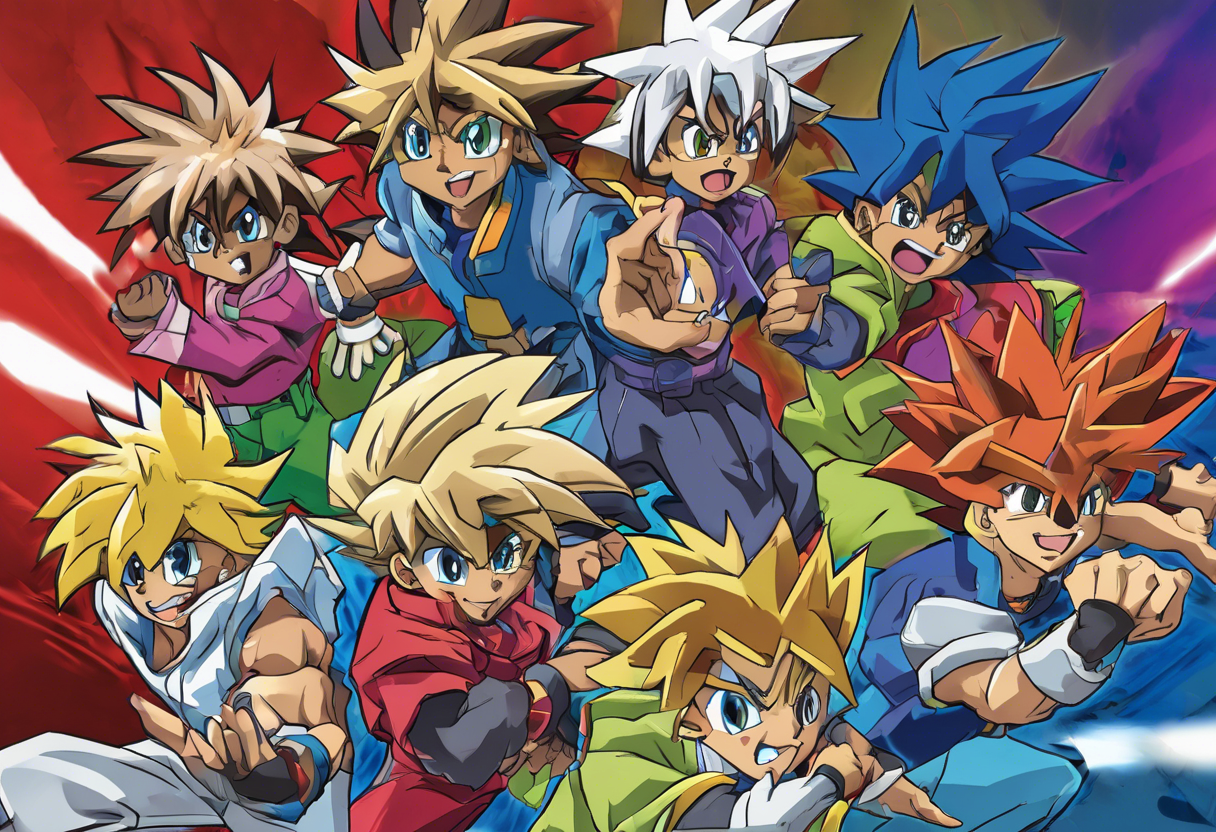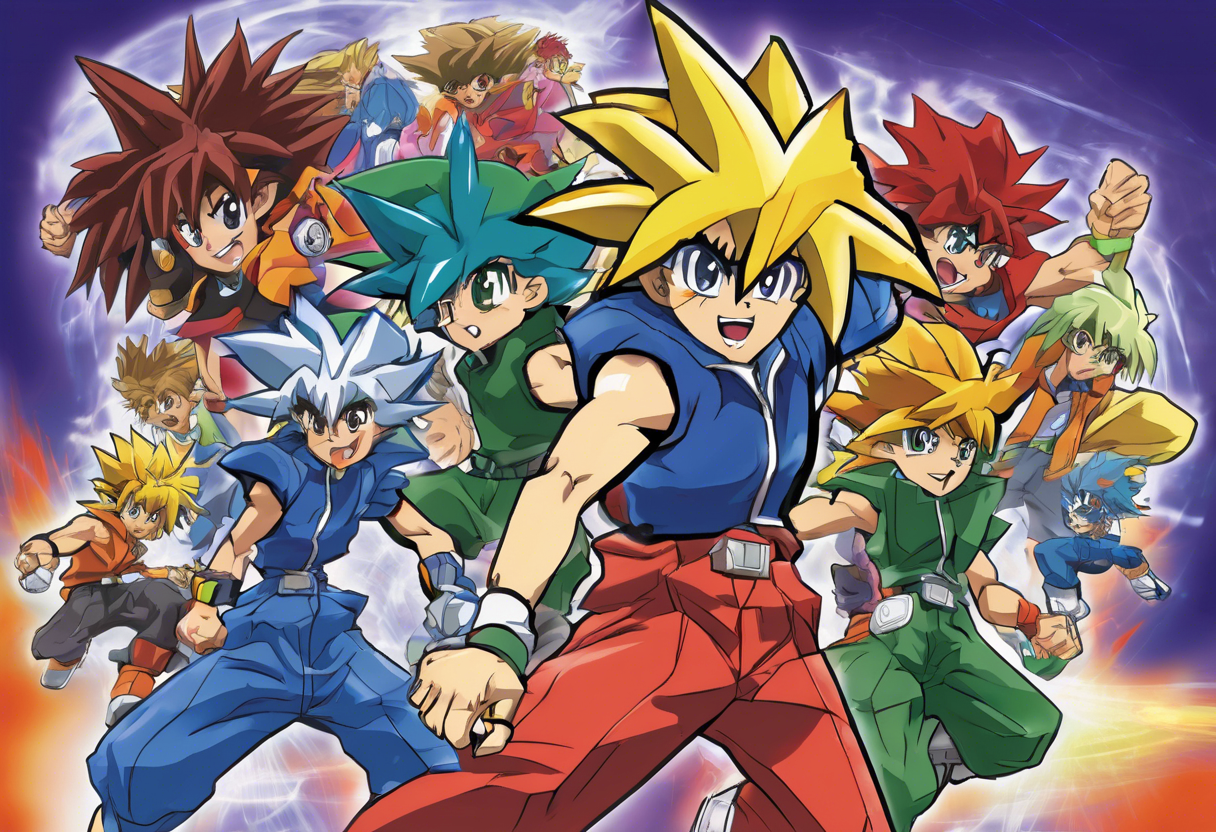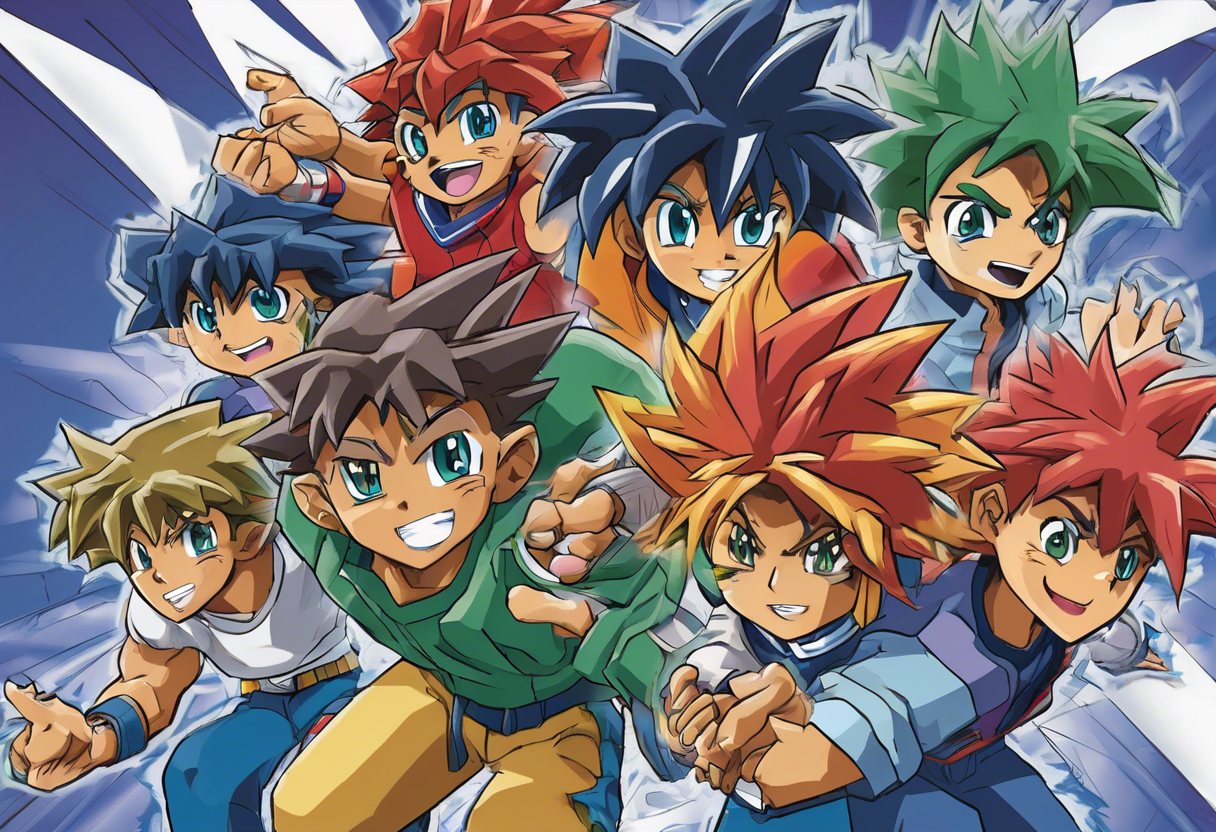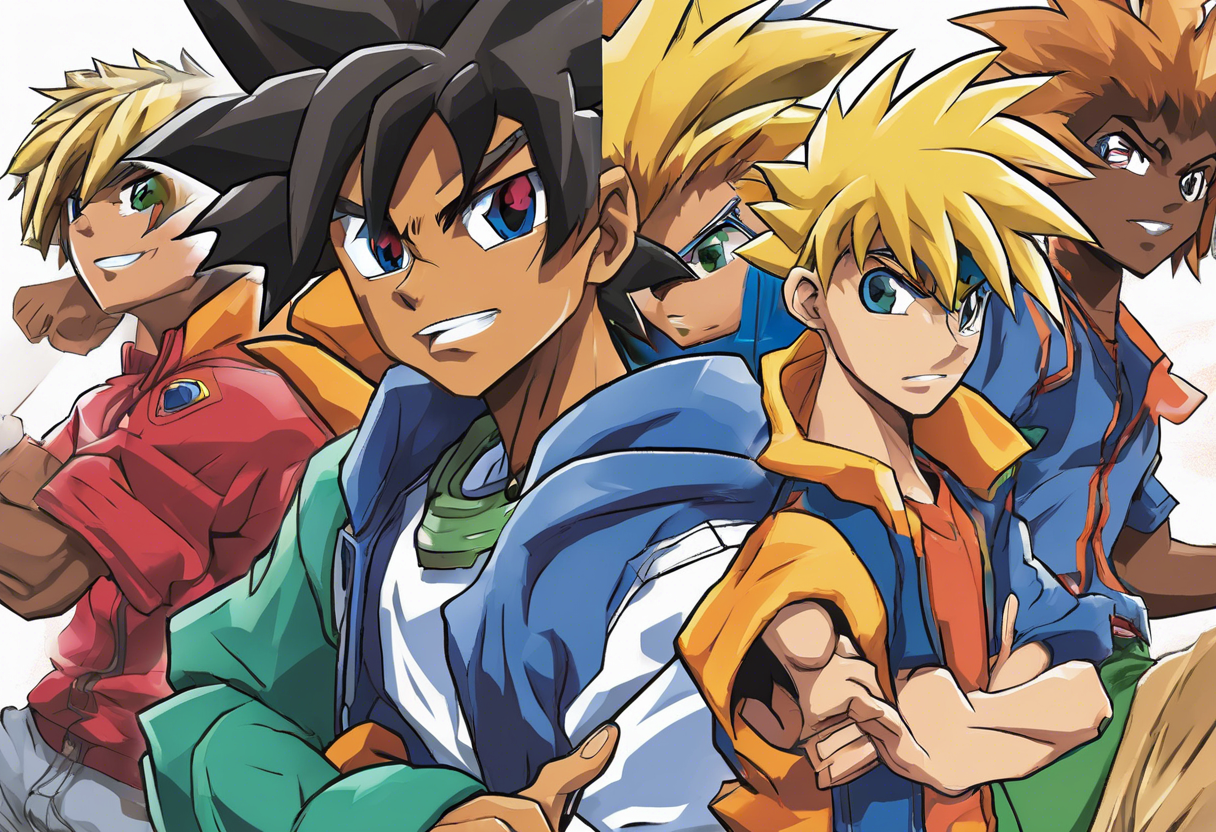Contents
Beyblade (2001) – Episode 13: The Group’s First Battle
Introduction
"Beyblade," the popular anime series that debuted in 2001, is known for its high-energy battles, compelling characters, and a narrative that blends adventure, comedy, and drama. Episode 13, titled "The Group’s First Battle," is a pivotal moment in the series, marking the Bladebreakers’ inaugural team battle in the Asian Qualifying Tournament. This episode was part of the first season, which aired from January 8, 2001, to December 24, 2001, in Japan and later in other countries including the United States on August 18, 2002[2][5].
The production of "Beyblade" involved several key creative figures. The series was directed by Toshifumi Kawase, with scripts written by various writers, including Junki Takegami and Atsushi Maekawa. The producer was Masao Maruyama, who played a crucial role in bringing the manga and toy franchise to life on screen[5].
What sets "Beyblade" apart within its genre is its unique blend of action, friendship, and personal growth, all centered around the competitive world of Beyblade battles. The series quickly gained popularity for its engaging storylines, memorable characters, and the innovative concept of spinning tops as a competitive sport.
Plot Summary
Episode 13 of "Beyblade" plunges viewers into the heart of the Asian Qualifying Tournament, where the Bladebreakers—comprising Tyson Granger (Takao Kinomiya), Kai Hiwatari, Max Tate (Max Mizuhura), and Ray Kon (Rei Kon)—are about to face their first major challenge as a team. The episode begins with the Bladebreakers preparing for their upcoming battle against the White Tigers, a formidable team known for their skill and teamwork.
As the day of the battle approaches, the tension builds up. Max, who has been training diligently, is confident about his abilities but also starts to feel a bit overconfident after an easy win in the first round against Gao from the White Tigers. However, this confidence is short-lived as Gao, fueled by his rage and the power of his Galzzy Bit Beast, surprises Max in the second round. Despite Max’s respectable defense, he ultimately falls prey to Gao’s newfound strength[2][5].
The loss in the first round is a wake-up call for the Bladebreakers. They realize that they are not as invincible as they thought and that their opponents are more formidable than anticipated. This realization prompts them to reassess their strategy and work together more effectively as a team.
The second round sees Ray facing off against another member of the White Tigers. Ray’s calm and focused demeanor contrasts sharply with the intense emotions of his opponent, but he faces significant challenges due to his opponent’s powerful Bit Beast. Despite these challenges, Ray’s determination and the support of his teammates help him to stay in the battle.
Meanwhile, Tyson and Kai are preparing for their own battles, each facing unique challenges. Tyson, the main protagonist, is known for his passion and determination, but he also struggles with controlling his emotions during battles. Kai, on the other hand, is the quiet and mysterious member of the team whose skills are often underestimated by their opponents.
As the battles progress, the Bladebreakers begin to understand the importance of teamwork and strategy. They learn to communicate effectively and support each other, which becomes a crucial factor in their performance. However, despite their best efforts, the team faces a series of setbacks and losses, highlighting the tough road ahead of them.
The final round of the battle is intense, with the Bladebreakers facing off against the White Tigers in a best-of-three match. The tension is palpable as both teams give their all, showcasing their skills and the power of their Bit Beasts. In the end, the Bladebreakers suffer a first-round loss, but this defeat serves as a valuable learning experience. They realize that becoming the world’s best Beybladers will require more than just individual skill—it will demand teamwork, strategy, and perseverance.
The episode concludes with the Bladebreakers reflecting on their performance and the lessons they have learned. They vow to improve and come back stronger, setting the stage for their future battles and adventures.
Themes and Symbolism
"Beyblade" Episode 13 delves into several central themes that are pivotal to the series. One of the most prominent themes is the importance of teamwork and collaboration. The Bladebreakers’ initial losses serve as a reminder that individual strength alone is not enough to achieve victory; it is the collective effort and support of the team that truly matters.
Another significant theme is personal growth and self-improvement. Each character faces their own set of challenges and learns valuable lessons from their experiences. Max’s overconfidence is humbled, Ray’s calmness is tested, Tyson’s emotional control is challenged, and Kai’s mysterious nature is further explored. These character developments contribute to the rich narrative of the series.
The episode also explores the theme of perseverance and determination. Despite facing setbacks and losses, the Bladebreakers do not give up. Instead, they use these experiences as opportunities to learn and improve, demonstrating the resilience and spirit that define true champions.
Symbolically, the Bit Beasts in "Beyblade" represent the inner strengths and abilities of the characters. The power of these Bit Beasts is often tied to the emotions and determination of their users, highlighting the connection between the physical and emotional aspects of the battles.
Cultural Impact
"Beyblade" Episode 13, along with the entire series, had a significant cultural impact upon its release. The show’s unique concept of competitive spinning tops captured the imagination of audiences worldwide, leading to a global phenomenon. The series spawned numerous merchandise lines, including the popular Beyblade toys, which became a staple in many children’s toy collections.
The show’s influence on popular culture is evident in its references and adaptations in other media. "Beyblade" has inspired various other anime series and manga, and its concept has been incorporated into different forms of entertainment, such as video games and live-action shows.
Critical Reception
"Beyblade" Episode 13 received positive reviews from both critics and audiences. Critics praised the episode for its engaging storyline, well-developed characters, and the intense action sequences. The episode’s focus on teamwork and personal growth was particularly highlighted as a strong point.
Audiences also responded well to the episode, appreciating the suspenseful battles and the emotional depth of the characters. However, some critics noted that the series could sometimes rely too heavily on formulaic battle sequences, but overall, the episode was well-received for its contribution to the series’ narrative arc.
Legacy
"Beyblade" Episode 13 continues to hold a special place in the hearts of fans and within the broader context of anime history. The episode’s emphasis on teamwork, perseverance, and personal growth has inspired many young viewers, making it a memorable and impactful part of the series.
The legacy of "Beyblade" extends beyond its initial run, with the series continuing to influence new generations of anime fans and creators. The show’s innovative concept and engaging storylines have made it a classic within the anime genre, ensuring its enduring relevance.







